The Double Negative Awards 2014
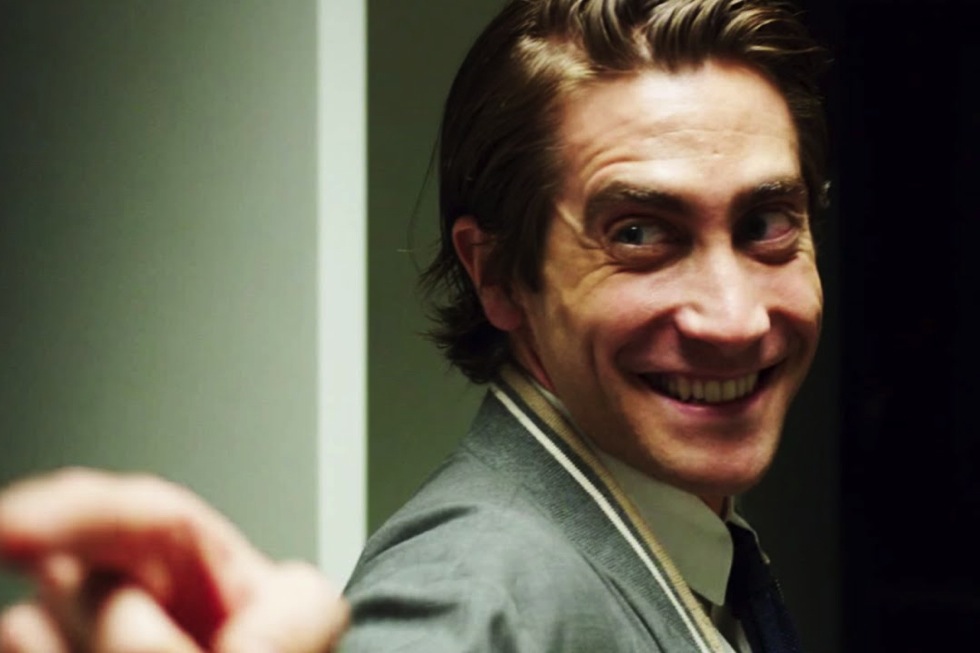
We may not have a glitzy ceremony, but we do have an esteemed panel of judges. All year, our critics have been travelling the length and breadth of Britain, witnessing the best contemporary (and classic) culture on offer. Editor Laura Robertson asked them to name their winners of 2014: who will make the cut?
How to choose the best experiences from an entire 12 months? Looking back through the seemingly endless TDN archives, it struck me how much we’ve actually accomplished this year and how fantastic the standard of writing is from our growing team. One major highlight for me were 2014′s Big Interviews, including artist Carlos Cruz-Diez, a giant in the field of colour technology who’s no less feisty at 91 years of age, and David Bowie collaborator and ‘design provocateur’ Jonathan Barnbrook, in equal parts funny and searingly honest.
Over 2014, we said goodbye to H.R Giger and Tommy Ramone; we argued over whether Liverpool Biennial was political enough; we queued to see Martin Creed, Piet Mondrian and Anselm Kiefer. We dodged lobsters flying through the air, shivered in ice galleries and investigated the photography of Congolese slavery. We travelled to New Delhi, Skärhamn, Edinburgh, Pittsburgh, Paris and London. Some of us even voted for Scottish Independence.
Overall, it’s been an incredible year. I’d like to thank everyone who has supported us since our inception in December 2011, making The Double Negative a continuing, vital source of arts criticism and cultural commentary. And, for me, a pleasure to read.
SO NOW, THE AWARDS…
WINNER: BEST FILM
Nightcrawler
Nominated by Jack Roe
Quite simply, Dan Gilroy’s Nightcrawler is an excellent film. A film that comments on contemporary society and the media that fuels it, which provokes and even demands a reaction without relying on tired, romanticized perspectives and cliches. Come awards season Jake Gyllenhaal (above) will, rightly, receive plenty of attention for his haunting portrayal of Lou Bloom; but the power of this film was instilled by Gilroy’s fantastic, jet-black and subtly satirical script, and an approach to direction that leaves the viewer firmly detached from emotional attachment, allowing the themes and action to speak for itself.
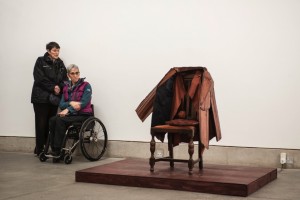
WINNER: BEST ARTS FESTIVAL
DaDaFest
Nominated by Jade French
Disability art has been described as the last remaining avant garde movement. Not just through its intention to challenge social inequalities, but by forcing us to question our understanding of what it is to be an artist. This year’s DaDaFest exhibition, Art of the Lived Experiment, did exactly that and more. It showcased artists exploring the idea of how a disabling society cause disabled people to constantly change and adapt to the world, and in other words, to live life experimentally. What struck me most about Art of the Lived Experiment was DaDaFest’s intriguing transformation; from work simply by and for disabled artists, to artworks broadly exploring the experience of disability. This was reflected in that DaDaFest commissioned more non-disabled artists than ever before — a daring move but one which I believe paid off. I have no doubt this produced a more solid exhibition and has attracted bigger audiences.
As well as broadening the curatorial theme, DaDaFest also diversified its programme by the addition of an international conference exploring ‘art as a tool for social change’. Loaded with fierce debate and passion, it was truly engaging and a roaring success.
Art of the Lived Experiment couldn’t have come at a better time. With many disabled people in this country experiencing the most harsh austerity measures in recent history (look no further than the demise of the Independent Living Fund), DaDaFest 2014 through its exhibitions, performances and conference platformed important social issues, urging audiences to ask a vital question; is art a human right?
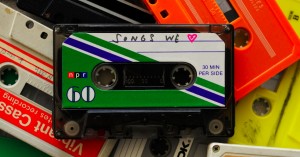
WINNER: BEST APP
npr Music’s Songs We Love 2014
Nominated by Stuart Burns
Perhaps it’s a bit meta to suggest that a website designed to gather together a radio station’s favourite music of the year should be included in a review of the year. But since it was published near the beginning of December it’s all I’ve been listening to. National Public Radio is the US equivalent of the BBC (indeed it often features the BBC’s news correspondents in reports) and this year, as well as presenting the experts and presenter’s choices, they’ve created a browser app which allows visitors to listen to the tracks, all 302 of them, randomly and for free, with short reviews by those experts and presenters justifying their choices with links to various shops and Spotify just in case we like what we hear.
The experience is the online equivalent of dawdling in a very good independent record shop and listening to whatever choices the experts behind the counter are making; a constant stream of weaponised delight and surprise. Og Maco’s vocabulary and musically challenged U Guessed It isn’t really my sort of thing, but TV On The Radio’s electronic wall of sound Seeds comes quickly on and after that Sam Hunt’s good natured House Party. Taylor Swift’s here too with two songs (you can guess which ones). With so many tracks to listen to, I haven’t reached the end yet, and I’m using the limited number of skips sparingly so I don’t know if this is a limited engagement. Until then, I’ll keep opening this page and pressing play.
Ooh, Leonard Cohen!
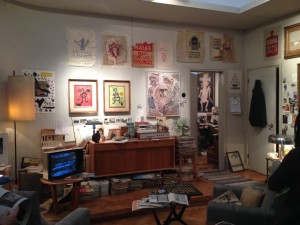
WINNER: BEST ART FAIR EXHIBITION
The Collector: Helly Nahmad Gallery at Frieze Masters, London
SPECIAL MENTION: Giant Spectacular, Africa Oyé, LIMF, Liverpool Biennial
Nominated by Peter Goodbody
My pick for 2014 is going to Helly Nahmad Gallery’s exhibition at Frieze Masters in London. Called The Collector, it was an installation of an imaginary apartment in Paris dating from the late ’60s. There were Miros and Picassos on the walls. There was a Giacometti sculpture on a coffee table. There were piles of newspapers, books and magazines covering just about every available surface. There was a B&W TV playing in the corner of the bedroom, and the bed hadn’t been properly made. There was the general accumulation of stuff that most of us collect over time. It was a snapshot of a day in The Collector’s life, although he wasn’t there and we knew nothing about him nor where he had gone that day. Except we did know about him; here was his life, style, likes and taste all laid out in front of us to be picked over and wondered about. It was a portrait of a person with no person present. It was genius and I loved it.
In my hometown of Liverpool, there were also many highlights: the Giants were spectacular, Africa Oyé was typically good and Liverpool International Music Festival (LIMF) really appeared to have come of age. The Biennial, too, had its moments of brilliance; the Dazzle Ship and Claude Parent at Tate Liverpool were inspired.
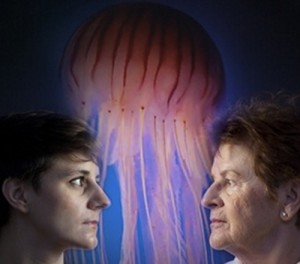
JOINT WINNERS: BEST PERFORMANCE
Clifford Owens/Ira Brand
SPECIAL MENTION: Tate Liverpool, Open Eye Gallery
Nominated by C. James Fagan
Starting with Clifford Owens: Better the Rebel You Know at Cornerhouse, Manchester, an honestly exciting and involving way of presenting performance work. Staying in Manchester and with performance, another highlight was Ira Brand’s delicate and poetic mediation on growing old that was A Cure for Aging (at Word of Warning, Z-arts).
Tate Liverpool also had an impact by presenting the work of Piet Mondrian, highlighting the relevance of the artist to a contemporary world. Plus they brought the beautiful work of Indian modernist Nasreen Mohamedi to my attention.
Finally, I’d like to mention that over the year Open Eye Gallery has curated a number of strong exhibitions that have approached the nature of photography from a totally different perspective. Maybe starting the year with one of my art crushes Gordon Matta-Clark may have swayed me, but they have had a very successful year.
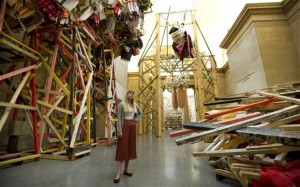
WINNER: BEST EXHIBITING ARTIST
Phyllida Barlow
SPECIAL MENTION: Ming: 50 Years that Changed China, Penny Davenport, Hockney, Serial
Nominated by Linda Pittwood
This is hard! Pleasingly, there have been a lot of highs. This list isn’t even exhaustive… My favourite exhibition(s) of the year has to be Phyllida Barlow’s more-or-less concurrent solo presentations at Hauser & Wirth Somerset and Saville Row, and at Tate Britain. Her drawings and sculptures have a joyous soul.
Other shows that I loved were Ming: 50 Years that Changed China at the British Museum – simply because I can’t see enough Chinese scrolls — and a show that couldn’t be more different: Penny Davenport at the Galley, Liverpool. I interviewed Penny and between her work and her words my mind went off in lots of fascinating, dark, intriguing directions.
In the cinema, I found Randall Wright’s film Hockney nothing new, but it was an enjoyable opportunity to revisit an artist whose work I know well, with an added (and very-funny) live broadcast of Hockney speaking from his home in LA at the end. And lastly, I’ve just got into the podcast Serial, which is essentially a long-form audio whodunit, really sensitively and cleanly delivered by Sarah Köenig.
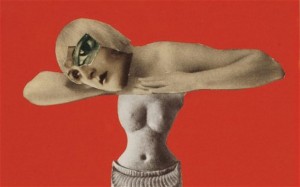
WINNER: BEST RETROSPECTIVE
Hannah Höch
SPECIAL MENTION: Trade Gallery, Poor But Sexy
Nominated by Wayne Burrows
If one exhibition this year had to be singled out, it would be Hannah Höch’s retrospective at Whitechapel Gallery. If there were initial worries that the tidy institutional display somewhat compromised the subversive energies of Hoch’s best-known Dada period, these were allayed by the expanded sense of her achievement made clear by the longer view offered by the substantial showing of later works, ranging from the post-war abstraction of the 1950s and ’60s to the Pop-inflected landscapes of the early 1970s.
Trade Gallery in Nottingham had a good 2014, too, with a selection of Rachel Maclean’s toxic sugar-rush videos gathered to good effect in in Quick, Child, Run! and Mimei Thompson’s hallucinatory still-life paintings among the highlights of a strong programme that ended, hopefully only temporarily, this month.
In a year that saw innumerable cliches about the former Eastern Bloc repeated to mark the 25th anniversary of the fall of the Berlin Wall, it was refreshing to read Agata Pyzik’s Poor But Sexy: Culture Clashes in Europe East and West (Zero Books), a personal re-evaluation of the things lost in that transition, written by a Polish woman born just before the seismic change. Revisiting post-punk’s obsession with trans-European trains, Soviet concrete and Constructivism, Pyzik highlights how the East’s dreams of the West were not a one-sided transaction, and explores the many ways in which in which ’80s Britain and ’70s New York were less distinct from the realities of ‘actually existing Socialism’ than is generally assumed. It’s scattershot, partial and digressive, but endlessly fascinating stuff.
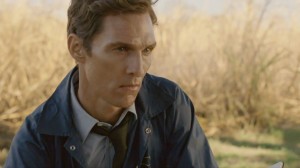
WINNER: BEST ACTOR
Matthew McConaughey
WINNER: BEST NOVELIST
George Saunders
Nominated by Joshua Potts
What a year it’s been for the former mahogany pin-up Matthew McConaughey. Bagging an Oscar for Dallas Buyer’s Club was a mighty feat, considering the competition – Chiwetel Ejifor and an increasingly scruffy DiCaprio headed better films, but none could match McConaughey’s ascendancy as the definitive Method Man of our time. He’s got a real darkness to him, his Texan drawl practically dripping gravitas; basically the anti-Christopher Walken, who always got by on the art of overplaying his vocal ticks to the point of self-parody. Yes, Day-Lewis might still beat him for sheer commitment (if we can believe he did make people call him ‘Mr President’ on the Lincoln set), yet McConaughey has become box-office plutonium, managing to keep the critical advocacy that’s followed his success with equal amounts of hosannas and disbelief.
Interstellar showed the family man beneath his inspired run of anti-hero personas. Not even a wormhole could warp the connection we feel to a father watching his daughter grow up on a computer screen. The ace in the hole, though, was HBO’s True Detective. As Rust Cole, the actor completely embodied one of the most nihilistic characters in recent memory, which is saying hell of a lot these days. If time is indeed a flat circle, then long may the McConaissance fight for the whiplash of the unexpected, knocking the dials of a career in its prime.

Absurdity and tragedy are natural bedfellows in George Saunders’ bizarre portrayals of capitalism run amok. Nothing in our modern condition escapes him. Theme parks are arenas of professional suicide; families struggle to do the best thing under the worst circumstances; a boy rescues a man with Alzheimer’s; beating the fear of one’s moment of definition, and of seeing your life through another’s eyes. His short fiction is some of the greatest literary catnip to come out of America in the last decade. Superlatives are frankly a waste of type space. Just know that his latest collection, Tenth of December, lives up to and surpasses expectations, dissecting a climate of raging humanity and individualism in a way that leaves hope for the Little Guy at the bottom rung of the ladder. 2014 has seen a nascent alignment with Karen Russell, a Saunders protégée, come to the fore. The two of them could whip their country into shape faster than Obama drinks his morning coffee. Despite their inimitable style and narrative control, Saunders’ stories remind us of the power of the imagination above all else, never failing to take the reader by the throat. If you haven’t jumped on the band wagon, do so immediately.
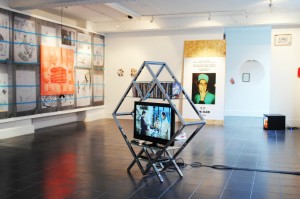
WINNER: BEST NEW GALLERY
MODEL Liverpool
Nominated by Heather Garner
This year saw Liverpool Biennial return for a multitude of art, performance and pedagogical events that enliven the city with healthy (and often heated) debate. But this year, amidst the Biennial hype, one collective stood out and apart from the crowd and for this reason deserves nominating.
MODEL Liverpool, the temporary art space set up through their own initiative by artists Fran Disley, Kevin Hunt and Dave Evans, provided an experimental and artist-led exhibition space that, in my opinion, rivalled some of Liverpool’s more established galleries in their inventiveness. Not to mention their mentoring of up and coming arts graduates through sessions that intended to give those in need of advice, inspiration, support and experience the all-important kick from behind.
As a recent Fine Art graduate, it can sometimes feel that the larger institutions dominate the creative industries and the DIY spirit has begun to dwindle, but MODEL has proved that all is not lost for the independent spirit.
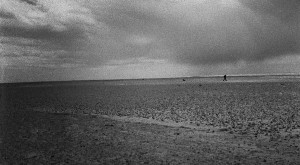
WINNER: BEST NOVEL
W.G. Sebald’s The Rings Of Saturn
Nominated by Adam Scovell
No, he isn’t a new name, and this isn’t a new novel, but Sebald floated across my pathway several times before I actually sat down and devoured a whole chunk of his work earlier this year, specifically diving headlong into The Rings Of Saturn (1995). The idea that a walk within a perfectly harmless landscape can be the groundwork to branch into such topics as the slave trade, Thomas Browne and the holocaust, is such a simple one, but also one that is extremely difficult to get right without falling into the offensively tawdry. Sebald, of course, balances the subjects with ease and his work is an absolute highpoint for almost any type of writing; his is a product that can fall quite easily into academia, prose, journalism etc.
This also lead to discovering Grant Gee’s beautiful film about the book, Patience (Waiting For Sebald) (2012) which is itself a visual palette of ideas and yet another highpoint of what is possible when using film to make images and discerning more from the landscape than simply what is on its surface. Considering the sheer bombardment of the more urbane obsessions of inner city creativity that often lurched into the blandly abstract, especially locally, Sebald’s writing and rural misanthropy was a much needed breath of fresh air and a real life-saver this year.
And last, but not least…
![]()
WINNER: BEST EMERGING CRITIC
C. James Fagan
Nominated by Laura Robertson
Chris Fagan has been a live art critic for The Double Negative for three years, and since then has provided unconventional and entertaining personal reflections on a wide variety of art and performance, that also manage to be consistently considered and eloquent. Thank you Chris for always being honest, balanced, and for your particular knack of taking the reader along on the (occasionally hair-raising) ride, arm-in-arm. Long may you brandish the pen!
So that’s it! From all at The Double Negative, we wish you a very Merry Christmas and a brilliant New Year.
See you in 2015! x





